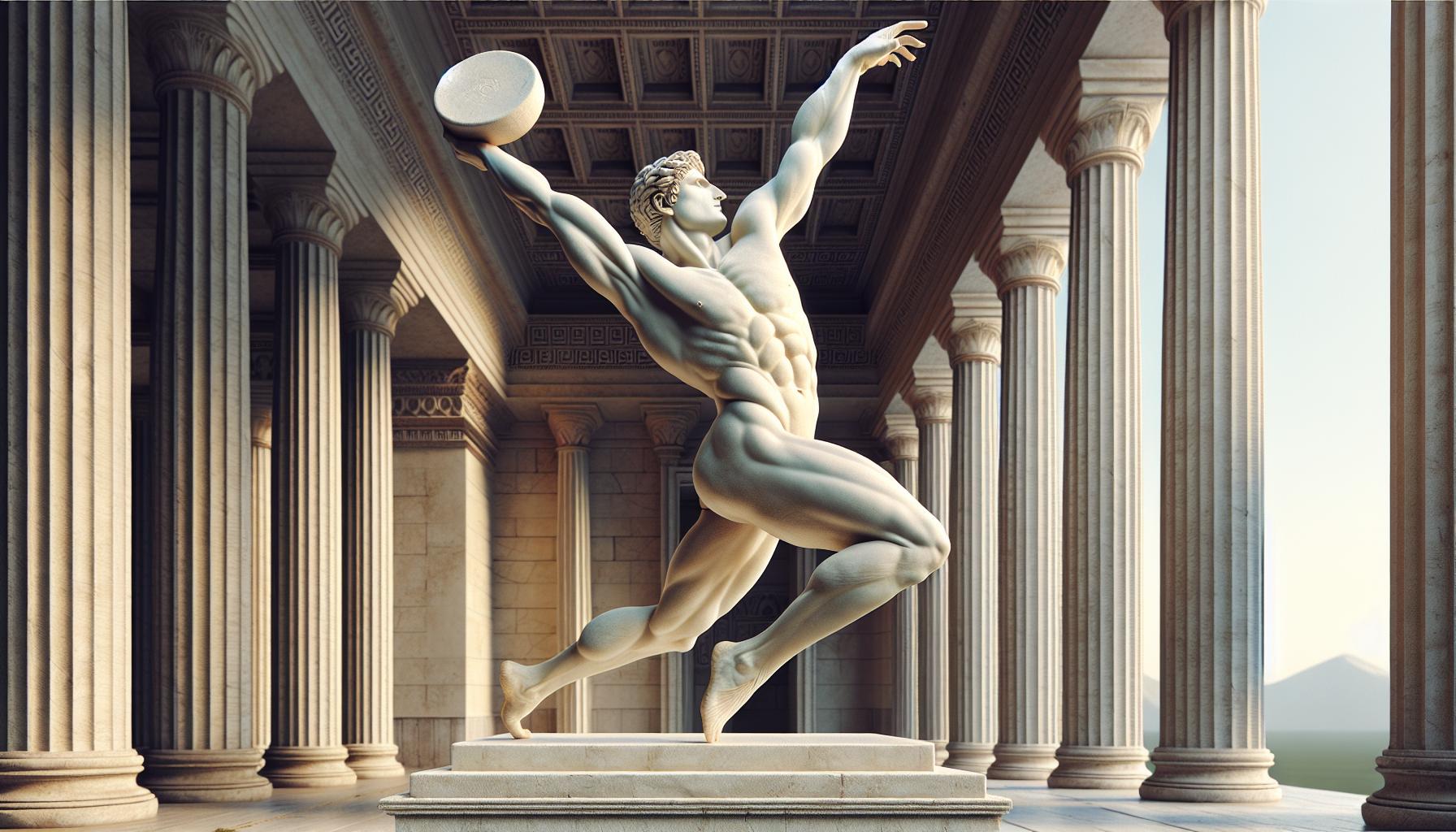In ancient Greece, beauty wasn’t just a matter of personal taste; it embodied a complex interplay of ideals that shaped their culture and philosophy. For the Greeks, a piece of art had to display harmony, proportion, and balance to be deemed beautiful. These elements reflected their understanding of the world and the pursuit of perfection, influencing everything from sculpture to architecture. Artists strived to capture these ideals, believing that true beauty could inspire virtue and elevate the human spirit. This article delves into the specific characteristics that defined beauty in Greek art, revealing how these timeless principles continue to resonate in contemporary aesthetics. Understanding these foundations offers valuable insights into the enduring legacy of Greek artistry and its profound impact on Western civilization.
For a Piece of Art to Be Considered Beautiful to the Greeks, It Had to Display ______.
The Greek concept of beauty in art centered on specific characteristics that defined aesthetic value. Harmony, proportion, and balance formed the foundation of what Greeks deemed beautiful. Artists meticulously applied mathematical ratios, often derived from the Golden Mean, to achieve visual harmony in their works.
In addition to structural principles, the Greeks emphasized idealized human forms. Sculptures and paintings showcased athletic physiques and flawless features, cultivating admiration for human perfection. These portrayals aimed to represent the divine, as artists believed that beauty reflected higher truths.
Moreover, beauty aligned with moral virtue. Greeks held that beautiful art had the power to elevate the soul and inspire moral behavior. Works depicting mythological gods and heroic figures served not only as artistic expressions but also as moral exemplars, reinforcing cultural values.
Lastly, the Greeks deeply valued the viewer’s experience. Art sought to evoke emotions, provoke thought, and invite reflection. This interaction transformed mere aesthetics into an essential part of human experience, making art a medium for philosophical exploration and emotional resonance.
Key Characteristics of Greek Art
Greek art embodies specific characteristics that define its beauty, emphasizing harmony, proportion, and ideal forms. These elements reflect the cultural pursuit of aesthetic perfection and moral virtue.
Harmony and Proportion
Greek artists utilized mathematical ratios, particularly those derived from the Golden Mean, to create visually harmonious compositions. They believed that a balanced relationship among elements fostered beauty. Sculptures of figures like the Discobolus (Discus Thrower) exemplify this principle, showcasing symmetrical proportions and rhythmic lines. Architecture, like the Parthenon, demonstrates proportional relationships using techniques such as entasis, which corrects optical illusions to enhance beauty. Such attention to harmony and proportion ensured that art resonated with both the human experience and the natural world.
Idealism and Realism
Greek art skillfully blended idealism with realism, portraying the human form in an idealized manner while retaining recognizable features. Artists aimed for perfection, depicting athletes and gods with defined muscles, smooth skin, and harmonious features. Works like the statues of Venus de Milo or the Apollo Belvedere illustrate this combination effectively. The idealized representations conveyed divine attributes and reflected higher truths, while the realistic aspects grounded them in human experience. This dual approach not only elevated aesthetic standards in ancient Greece but also informed future artistic movements throughout Western art history.
The Role of Symmetry in Beauty
Symmetry played a crucial role in defining beauty in Greek art. Greeks believed that a symmetrical composition naturally conveyed harmony and balance, essential characteristics of aesthetic appeal.
Geometric Principles
Geometric principles underpinned Greek artistic designs. Artists relied on geometric shapes to create balanced compositions, establishing a pleasing order in their work. The use of circles, squares, and triangles aided in achieving visual stability. These geometric forms also represented the universe’s underlying order, aligning artistic expression with nature’s principles.
Mathematical Ratios
Mathematical ratios significantly influenced Greek aesthetics, particularly the Golden Mean. Artists applied ratios like 1:1.618 to ensure proportions appeared harmonious. This approach directed artists in creating sculptures and buildings that exuded elegance and restraint. Iconic structures such as the Parthenon exemplify this principle, showcasing columns and facades precisely aligned to ratios that enhance beauty and visual impact.
Cultural Significance of Beauty in Greek Art
Greek art profoundly shaped cultural values and philosophical inquiries, intertwining aesthetics with moral and ethical ideals. The pursuit of beauty in art represented a deeper quest for truth and virtue, fundamentally influencing subsequent artistic endeavors.
Influence on Philosophy and Aesthetics
Greek concepts of beauty significantly impacted philosophical discourse, particularly through the contributions of thinkers like Plato and Aristotle. Plato viewed beauty as an ideal form, a reflection of ultimate truth that transcended physical manifestations. He posited that experiencing beauty in art could lead individuals toward a greater understanding of moral goodness. Aristotle, however, emphasized the embodied nature of beauty, suggesting that it arises from the harmony of parts within a whole. This dialogue between idealism and realism fostered a comprehensive framework for aesthetics, encouraging artists to seek a balance of perfect forms while addressing human experience.
Impact on Subsequent Art Movements
Greek artistic principles established foundational standards that influenced many art movements throughout history. The Renaissance, for instance, embraced Greek ideals of symmetry, proportion, and anatomical perfection, leading to masterpieces by artists such as Michelangelo and Raphael. Neoclassicism echoed Greek styles, focusing on idealized beauty and heroic themes, as seen in works by Jacques-Louis David. Even modern art continues to draw upon Greek aesthetics, with movements like Surrealism exploring the complex relationship between beauty and the subconscious. The legacy of Greek art’s emphasis on harmony, proportion, and moral virtue remains evident in contemporary artistic expressions, underscoring its lasting cultural significance. For a piece of art to be considered beautiful to the Greeks it had to display harmony, proportion, and moral virtue. These elements were not merely aesthetic choices but reflections of deeper philosophical beliefs. The Greeks understood beauty as a pathway to inspire virtue and elevate the human spirit. Through mathematical ratios and idealized forms they crafted works that resonated with both emotional and intellectual depth. This pursuit of beauty shaped their culture and continues to influence artistic expressions today. The legacy of Greek ideals remains evident in modern art and philosophy, reminding us of the timeless connection between beauty and moral integrity.


